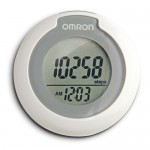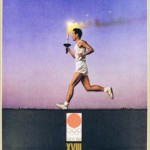By Suzanne Sparrow Watson
My name is Suzanne and I am an Olympic-olic. Yes, I admit it. I had many Walter Mitty moments while watching Olympic games these past two weeks, fantasizing that if only I had practiced more I could have been an elite athlete. That’s preposterous, of course. I was on a swim team in high school and the coach only put me in when we were either so far ahead or trailing so hopelessly that my entry into the water was not going to affect the outcome. Still…I remain fascinated by all Olympic sports and swimming in particular. During the games that just ended I rejoiced in every race that Caleb Dressel swam. In addition to being a very admirable athlete, I have heard from someone connected to the team that he is also a really nice guy. Plus, I saw an interview with him in which he said that he tries to be better in anything he does so that he can be better at everything he does, including being a good dog dad. Wow. How can you not like a guy whose aspirational goal is to be a better dog dad?
Although I focus on the swimming events, I also like gymnastics. Again, in high school and college I took classes in the balance beam and uneven bars. Just like in swimming, my gym career was not destined for anything but bruises. At least in the water I had buoyancy going for me. The pads on the gym floor were not so forgiving. Still, the experience left me with a keen appreciation for what the gymnasts are able to do. Tim Daggett, the former Olympic gymnast who was an announcer for the events, kept reminding us that the balance beam is only as wide as the average cell phone. I bump into walls around my house on a regular basis so I’m pretty certain that the balance beam is outside of my wheelhouse these days.
 I found myself watching at least some of every sport over the past two weeks – Argentina vs Turkey in fencing, Slovakia in the race walking, and the U.S. in everything. Some of the sports have been around since the first Olympics and some made their debut this year. I consider myself pretty open-minded when it comes to sports but I had a hard time wrapping my head around one of the new entries: street skateboarding. The official description of the sport describes it as a competition held on a straight street-like course, featuring stairs, handrails, curbs, benches walls and slopes. I watched the women’s final of this event and could hardly keep focused on it. The competitors would jump onto a handrail and – most often – crash to the ground. It got me to wondering how people ever get good at this sport. First, most places now ban skateboards from shopping centers and malls. So I imagine that unless the competitors have one of the new skateboard parks nearby, they improve their skills by terrorizing people wherever stairs and benches exist. Second, from the litany of broken bones they talked about, I would think they don’t have much time to practice between hospital visits.
I found myself watching at least some of every sport over the past two weeks – Argentina vs Turkey in fencing, Slovakia in the race walking, and the U.S. in everything. Some of the sports have been around since the first Olympics and some made their debut this year. I consider myself pretty open-minded when it comes to sports but I had a hard time wrapping my head around one of the new entries: street skateboarding. The official description of the sport describes it as a competition held on a straight street-like course, featuring stairs, handrails, curbs, benches walls and slopes. I watched the women’s final of this event and could hardly keep focused on it. The competitors would jump onto a handrail and – most often – crash to the ground. It got me to wondering how people ever get good at this sport. First, most places now ban skateboards from shopping centers and malls. So I imagine that unless the competitors have one of the new skateboard parks nearby, they improve their skills by terrorizing people wherever stairs and benches exist. Second, from the litany of broken bones they talked about, I would think they don’t have much time to practice between hospital visits.
I guess I just have to learn to go with the flow. If the young kids like these sports then I’ll just sit back and watch them participate. My Olympic dreams are now reduced to getting out of the recliner without falling over. Who knows? If they ever have a Geriatric Olympics that includes Recliner Acrobatics, I could be a contender.




